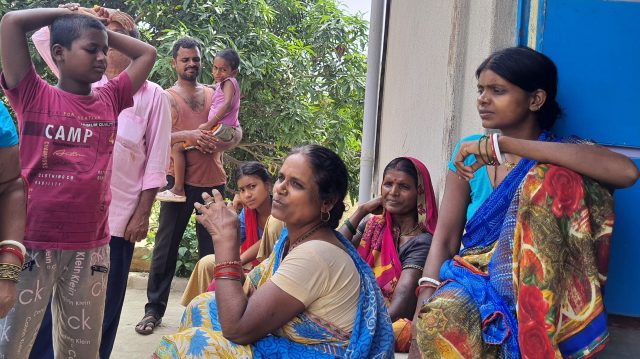
Also written by Arif Nizam
Bihar’s assembly election recorded a historic turnout of 67.14 per cent, a dramatic rise of 7.54 percentage points over the 2020 polls. While this surge has been widely attributed to political enthusiasm and better mobilisation of women, the underlying data tells a more precise story: The decisive factor behind this extraordinary increase was the unprecedented participation of returning migrants during the Chhath festival. While the SIR-led voter roll purge played a role in boosting turnout, migrants mattered far more.
Our analysis of VLR (Mobile Visitor Location Register) for interstate mobility suggests a return of net 3.1 million migrants in Bihar during October-November, beginning with Durga Puja. This number has been consistent since 2022. This return is part of the state’s annual cultural cycle, yet its electoral significance is rarely this evident. Unlike the 2020 election, which took place before Chhath, the 2025 elections were held after Diwali and Chhath, perfectly coinciding with the presence of millions of otherwise displaced migrant workers. They were home, available, and politically activated.
If all 3 million migrants voted — a scenario supported by their physical presence and heightened political interest — they alone contributed about 4.02 percentage points to the turnout. This exceeds the entire “real” behavioural increase of 3.8 percentage points. In statistical terms, migrant participation did not just influence the turnout curve — it defined it. Without migrant votes, Bihar’s turnout would have remained roughly the same as 2020, once the SIR effect is removed.
These migrant votes matter not only numerically but politically. They are likely to shape the outcomes in a series of constituencies where margins are traditionally narrow and migration rates are high. Districts of northern Bihar and the Seemanchal region having higher migration rates, have especially recorded higher turnouts. In a state where many seats are won by razor-thin margins, even a few thousand migrant votes can alter political fortunes.
This election was also remarkable because migration — palayan — became a core campaign issue. Opposition parties repeatedly hammered the ruling establishment on joblessness and the mass exodus of youth. Prashant Kishor’s Jan Suraaj Party, in particular, used palayan as its central narrative, directly appealing to migrant workers and their families. Its speeches, yatra routes, and candidate messaging were calibrated around the dignity of labour, opportunities outside Bihar, and the aspiration of bringing migrant youth back home. As the campaign progressed, palayan transformed from an economic concern into a political identity.
This raises a pivotal and politically sensitive question: Did migrant voters behave differently from traditional caste-based voting blocs, or did they reinforce existing caste solidarities? The answer could redefine Bihar’s political sociology.
On one hand, migrants are exposed to other states’ governance models, labour markets, and social environments. This exposure often broadens their expectations beyond caste loyalties. They return with comparative assessments — better roads in one state, improved policing in another, stronger public services elsewhere. These experiences have the potential to make them more aspirational and less bound by their caste group’s political choices.
On the other hand, the context of their return — Chhath Puja — places them squarely within their extended families and caste networks at the exact moment of voting. In Bihar’s social structure, families and caste groups often vote cohesively. Migrants returning to these environments may find it more natural to align with collective decisions, thereby reinforcing traditional caste patterns.
The results will tell us whether Bihar’s migrants have matured into an independent political bloc with their own preferences, or whether the gravitational pull of caste continues to dominate their electoral choices. If migrants voted independently in significant numbers, this election could mark the beginning of a profound transformation in Bihar’s politics. If they voted within caste frameworks, then their sheer numbers — not their distinct preferences — will determine electoral impact.
Meanwhile, the SIR cleanup, although widely discussed, played a secondary role. By removing 44 lakh inaccurate entries from the voter roll, the electoral denominator shrank from 7.89 crore to 7.45 crore, mechanically inflating turnout by about 3.74 percentage points. But this was a mathematical correction, not a movement of voters. It cannot explain the behavioural surge.
In the end, Bihar’s Assembly election turnout was driven overwhelmingly by the presence and participation of migrants. Their return synchronised perfectly with the cultural calendar, and their political visibility was amplified by a campaign that placed palayan at its centre. As Bihar awaits constituency-wise results, one question looms large: Did migrants vote for change, or did they vote with their caste? The answer will shape not just this election’s outcome, but possibly the trajectory of Bihar’s politics.
Rajan is chair, International Institute of Migration and Development, Kerala, and Nizam is independent migration researcher based in Bihar